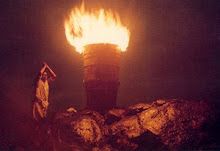Tiruvannamalai town Under Hoysala Kingdom:
Tiruvannamalai is an ancient city exists since 8th Century. Ellappa Nayanar the Sixteenth century Tamil scholar, recorded extensively about Tiruvannamalai town in his Arunachala Puranam tamil literature work. There is an Sansksrit literature work called Arunachala Mahatmyam written in same period. But there is known controversey among Sanskirit and Tamil scholoars, in claiming which literature is written first about tiruvannamalai history. Unlike Sanskirt version, ancient Tamil scholoar Ellappa Nayanar's has extensively recorded about the Tiruvannamalai City architecture and the legendary stories about King Vallalan the Hoysala empire. The king has contributed in spreading the benefit of Girivalam and Arunachala temple. Which Subsequently helped the expansion of Tiruvannamalai town. King Vallala was ruling entire south india from Deccan Plateu with Dwarasamdura as capital. Now called Halebid lay to the north-west of Mysore. We can still see the richness of Hoysala art, architecture and its unique style distinguished by a high density of details and embellishments, among the remains of city Halebid.
Till then history of Tiruvannamalai can be sporadically tracked among Chozha, Pandiya Tamil literature work ranging period from 6th century to 8th century. The eldest script would be 6th century tamil script written on Madurai Meenakshi Temple wall, referring grandfather of Madurai meeta Sundara pandiyan (Who liberated Madurai from Kaalee ruler) Kulesekara Pandiyan II. In the script, Tiruvannamalai and has been mentioned as Thiruvanangum Malai as part of Madurai kingdom, . As we know the enormous details of Tiruvannamalai History began appearing only after Ellappa Nayinar's Arunachala Puranam.
King Vallalan Founder of Tiruvannamalai Town:
King Vallalan's devotion and piety are celebrated in chapter seven of the Arunachala Purananam, written in sixteenth century by Ellapa Nayinar. The work is based on the Arunachala Mahatmyam, written several centuries before in Sansksrit, but the chapter dealing with King Vallalan and his exploits in Tiruvannamalaai can only be found in the Tamil version. To find out why he is so revered in Tiruvannamalali, and indeed, why he was in Tirvannamalai at all, it is necessary to go back a few years and give an account of his family history.


